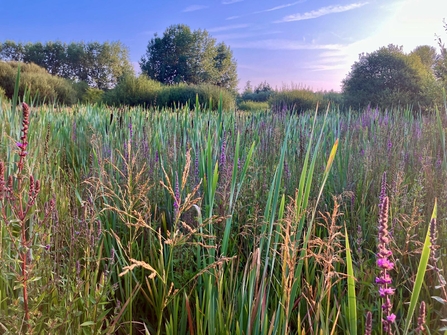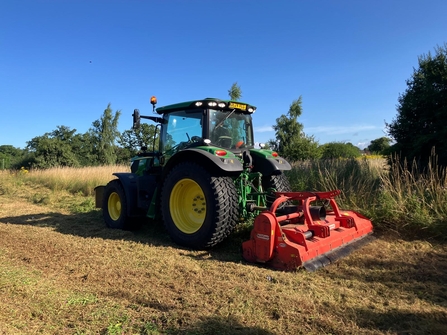July 2024 has been an important month for Stafford Brooks, with the delivery phase of the conservation work taking off at full speed, and as the old adage goes you need to “make hay while the sun shines.”
This expression is more than just sagely advice passed down from medieval English farmers, but very literal for our grassland, wetland, and river conservation work. This work hinges on weather, and the narrow window of summer when the sun is shining, the ground is dry, most young birds have fledged, and the local meadows are packed full of flower seeds.
For Stafford Brooks, our work schedule was designed to flex and shift as needed around this very important window of time. With quite a few factors to consider, we’re excited with how much work has been able to progress so far. Have a look below.



